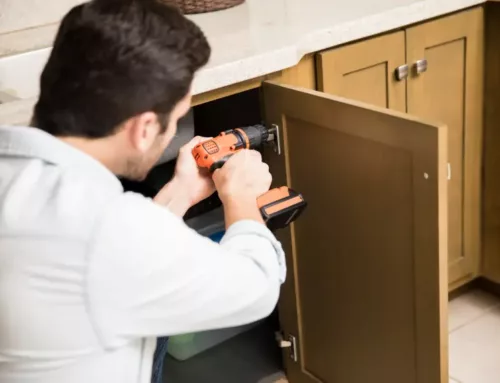Table Of Contents
How To Clean Paint Tools Plus Tips On What To Do With Leftover Paint

Paint rollers and brushes are an essential part of every paint project. Whether painting the interior or exterior of your home, the ceiling, walls, or furniture. You need paint brushes or rollers. However, once the painting is done, the dirty paint tools saturated with color need a deep clean. Here are some professional tips for cleaning paint tools.
Pro Tip: Allowing paint to dry on a roller or a paint brush makes it significantly harder to clean and use again. To avoid letting the paint dry when you need to set it down for a while, put your roller or brush in a plastic bag and wrap tape around the handle to lock moisture in the bag so the paint can’t dry while you are away.
How To Clean A Paint Roller Or Paint Brush
Clean Brushes And Rollers Immediately After Painting
Letting paint dry on painting tools is a sure way to get paint stuck on them. The best way to clean these items is right away. When the paint is still wet on the brush or roller, you can simply run it under a faucet or hose. Using gloves, rub in some dish soap and rinse it off until the water runs clear (Longobucco). This is the easiest way to keep your painting tools clean.
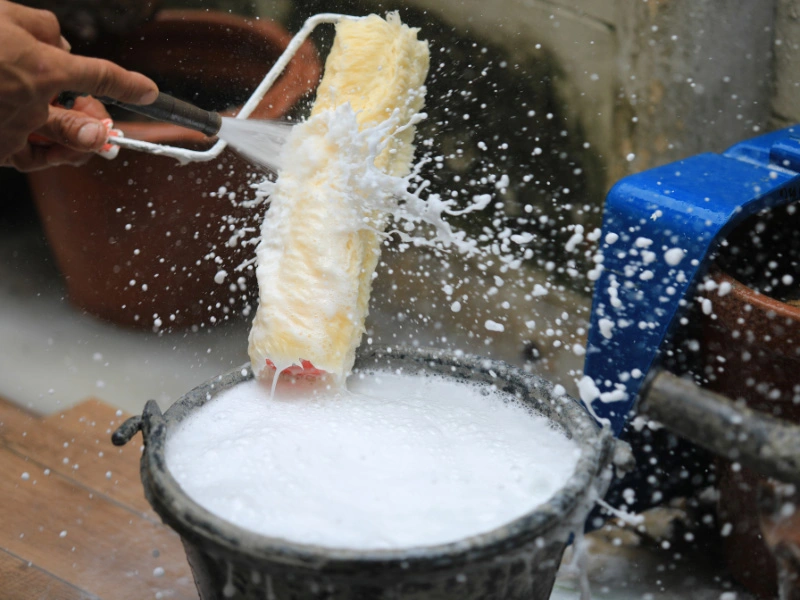
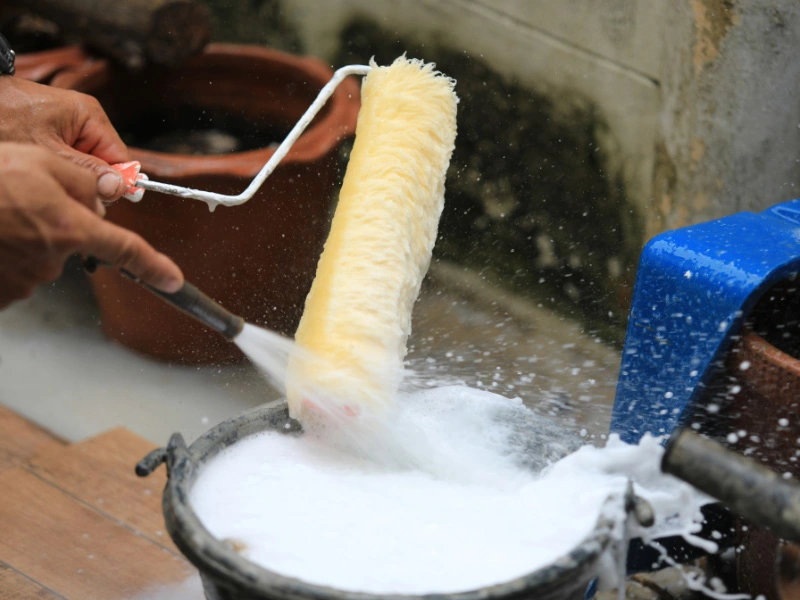
Remove As Much Paint As Possible
If that first method doesn’t work or just seems to be taking too long, the next thing to do is to utilize the scraping tools you have on hand. Hold the roller or brush over a paint can, and scrape the excess paint into the can (Leverette). This process should remove the thickest layer of paint. Next, take the roller or brush and run it over a newspaper or another surface you don’t mind getting dirty. The action of brushing the paint onto another surface will remove even more paint.
Clean The Roller And Brush With A Solvent Or Soapy Water
Let your roller soak in warm soapy water or use a solvent in a container to get off all the paint. Still wearing gloves, separate the paint roller frame from the roller cover. If you used latex paint, wash your roller in a bucket of warm water and dish soap. Let the frame soak, and use a stiff-bristled brush to scrub away tough stains. If you used oil paint, pour some thinner or mineral spirits onto a cloth rag, and use it to scrub off the paint. You can clean all parts of the roller this way, including the cover.
The same method applies to paint brush handles and bristles. Use a bucket of warm soapy water or a solvent (“How to Clean Paint Brushes”). This should get all the paint off. When finished, rinse the brush under water to clear any leftover paint.
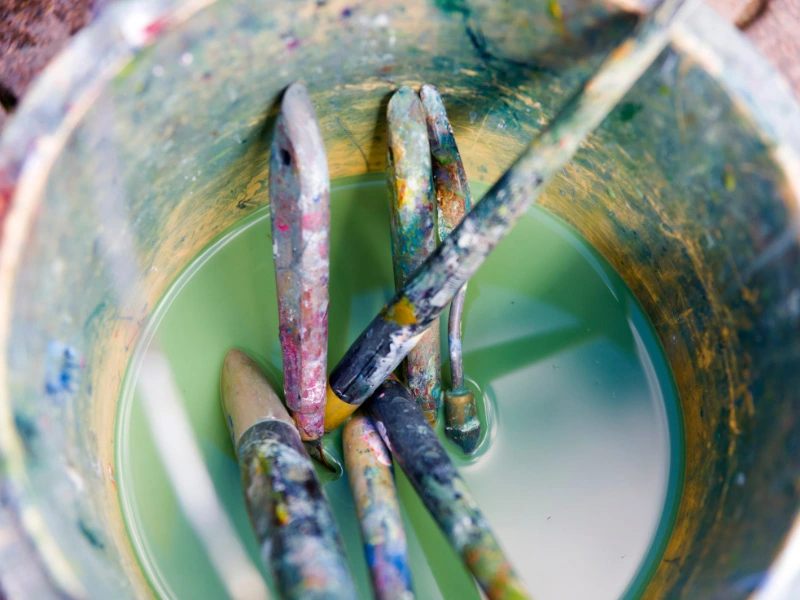
Pro Tip: If you’d like to keep and reuse your used solvent, allow the paint sentiments to settle at the bottom of whatever container you were soaking the paint tools in and then pour the top clean layer of solvent back into the original bottle for future use (Gustafson).
Dry The Tools
Allow your items to dry fully before storing them. You can go over the roller and brush with a clean rag to remove excess water and then leave them out. Once dry, you can wrap the paint brush and/or paint roller in newspaper or even store them in their original packages to keep them in good shape after each use.
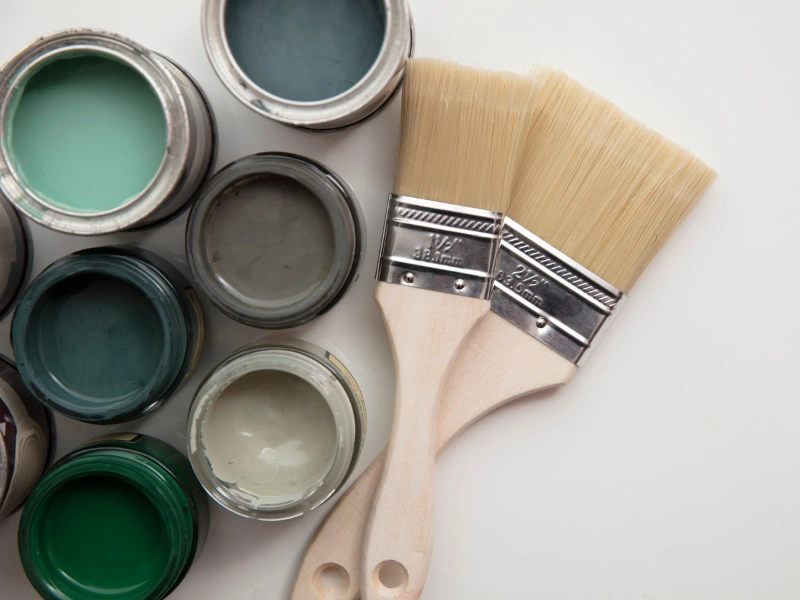
Reuse Your Painting Tools
Did you know that you can reuse most paint rollers up to five times (“Reusing Paint Rollers and 9 Other Green Tips”)? Paint brushes last even longer. Depending on how well they are cared for, many paint brushes can be used multiple times for many years (“How to choose and clean your paint brushes.”).
Pro Tip: If you’d rather skip the painting tool cleaning process all together, hire professional painters to complete the paint job from start to finish. Servicing Portland, OR, and the surrounding areas, JK Paint & Contracting has all their own tools and won’t need you to lift a finger. We handle all the cleanup so that you don’t have to!
What To Do With Leftover Paint
When the cleaning is finished, you may be left with some leftover paint. What should you do with it? Most people choose to throw it away, but wet paint doesn’t belong in the trash. Whether you want to know how to correctly dispose of paint or want to save it for a future project, we can help.
How To Dispose Of Wet Paint Correctly
Here in Oregon, the law actually prohibits the improper disposal of wet paint (“Guide to managing paint waste”). If you want to dispose of leftover paint, there are a couple options.
Oil-based paint is considered hazardous waste (Cerulli) and needs to be disposed of at a recycling center or at your local paint or hardware store, assuming they have a recycling program. Latex paint is non-toxic, but it can become dangerous if not disposed of properly. It can be dropped off at a recycling center as well.
Pro Tip: PaintCare (“Washington County”) is a program that recycles and properly gets rid of paint in Oregon.
For latex-paint you can also utilize the kitty litter approach (Huus and Bowsher). Mix kitty litter in with your paint and let it solidify. You can even mix shredded paper into the paint to accelerate the drying process. Once the paint is dry, set the can, with the lid off, in your trash container for pickup.
If there is only a little latex paint left or you simply need to get rid of an empty paint pail, remove the lid and allow the contents to thoroughly dry. When dry, metal paint cans and lids can be recycled or thrown in the trash – plastic lids need to be thrown away and can’t be recycled (“Guide to managing paint waste | Metro”).
Throwing dried paint into the trash only applies to latex-based paint. Oil-based paint must be disposed of at a recycling center.
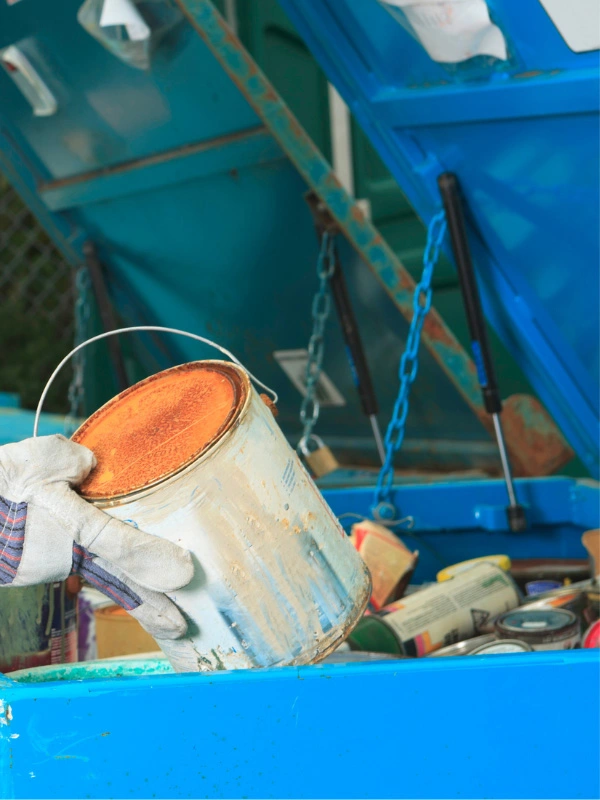

Store Paint To Reuse At Another Time
Instead of going through the process of drying out a bucket of leftover paint, you can also store paint to reuse it for future projects. You can store small amounts of paint in mason jars. Keep larger amounts of paint in the original can. Place the paint can or jar upright in a dry place that doesn’t get hit by sunlight (“6 Tips for Storing Leftover Paint & Shelf Life”). This will keep the paint fresh.
The best place to store your leftover paint is in the basement, a cabinet, or a closet (Holly H). You should avoid using the garage or attic as storage areas because these locations are susceptible to extreme temperature fluctuations in the summer and winter. High and low temperatures will damage the paint quality and make it unusable (“Does Paint Go Bad?”).
Make Chalkboard Paint
Do you have kids? Maybe you’re a kid at heart? Or perhaps you’re a busy bee that runs out of post-it notes on the daily? There’s good news for you—another thing to do with leftover paint after a remodel is use it to make chalkboard paint (Doyle).
For this project, you need Plaster of Paris (“Drywall Repair”), leftover paint, and water. For every three tablespoons of paint you use, mix in two tablespoons of plaster and one tablespoon of water. This chalk paint (Lowe’s) can be used on furniture, walls, inside cabinets, and wherever else you wish you could doodle or jot down important notes.

Donate Your Paint
If you really have no use for your paint but don’t want to throw it away, donate it (Shapley)! There are plenty of organizations that would love a paint contribution. Organizations such as Habitat for Humanity use paint on homes for the less fortunate (“Where to Donate Unused Paint”). Donating paint is a great way to get rid of it while also not wasting it.

Get Help On Your Next Paint Project
Need help with your upcoming paint project? Whether it’s an interior or exterior paint job, JK Paint and Contracting can help. We also take care of the paint disposal and clean up so you don’t have to. If you’re in or around Portland, OR, give us a call to discuss your vision.



